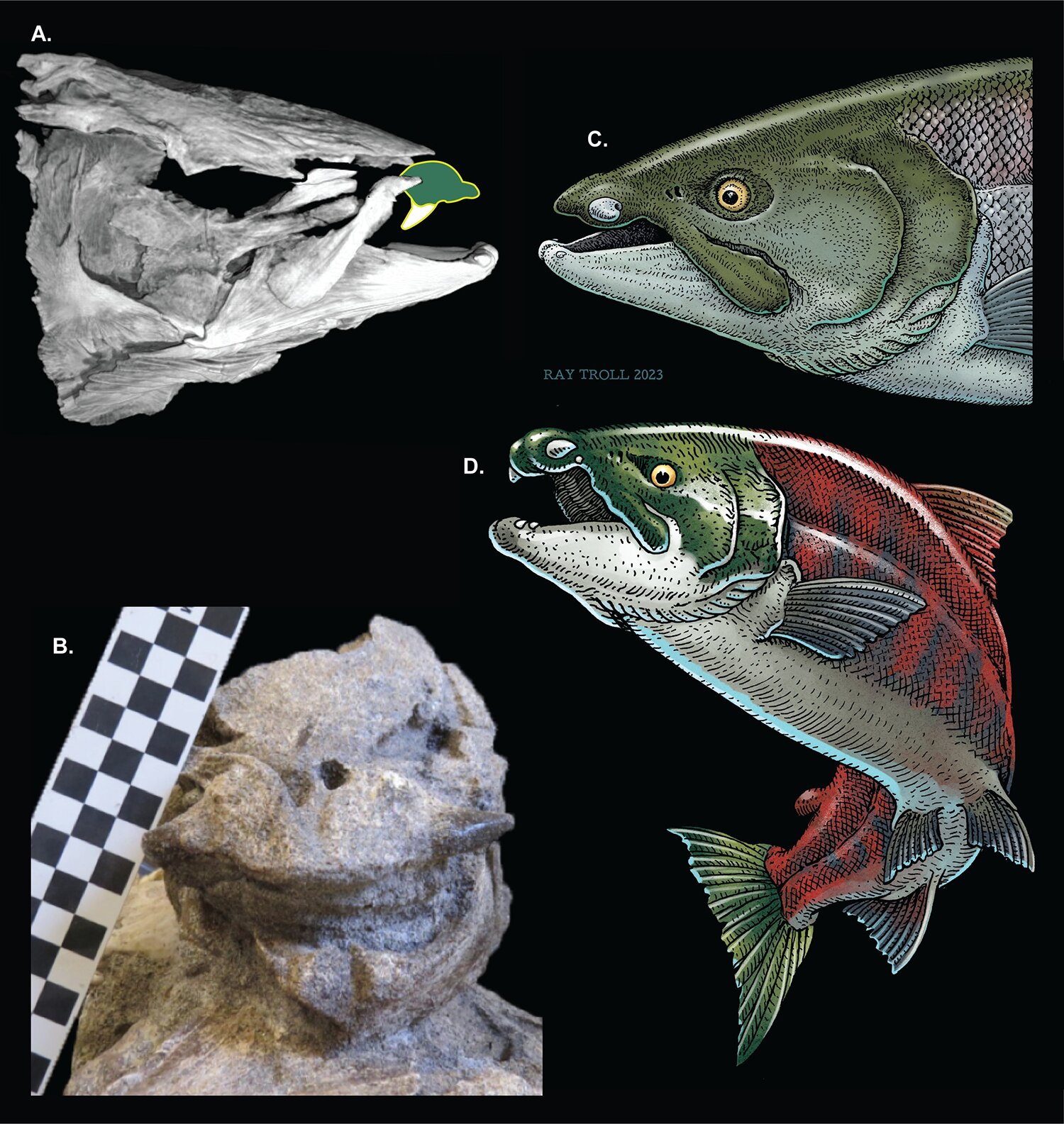Oncorhynchus rastrosus, a fascinating giant salmon species that roamed the ancient waters of the North American Pacific Northwest millions of years ago, has recently captured the attention of scientists and enthusiasts alike. A recent study published in the open-access journal PLOS ONE sheds new light on this remarkable creature, revealing intriguing details about its unique anatomical features and potential behaviors.
Described as a colossal member of the Salmonidae family, O. rastrosus has long intrigued researchers due to its massive size, estimated to reach up to an impressive 2.7 meters (8.9 feet) in length. What sets this prehistoric salmon apart, however, are its distinctive front teeth that protrude sideways from its mouth, reminiscent of tusks seen in animals like warthogs.
The initial assumption, based on earlier fossil discoveries, was that O. rastrosus possessed backward-pointing teeth akin to fangs, leading to its popular moniker, the “saber-toothed salmon.” However, recent advancements in technology, including detailed CT scans and analysis of various O. rastrosus fossils, have unveiled the true nature of these teeth—they projected sideways from the fish’s mouth, earning it a more fitting title, the “spike-toothed salmon.”
The implications of these unique teeth are intriguing yet somewhat enigmatic. While the exact purpose remains speculative, researchers propose several plausible explanations. One theory suggests these spikes may have served as defensive weapons, aiding the salmon in combat against rivals or predators. Another possibility is that they were utilized as tools for excavating nests, essential for the reproductive success of these ancient giants.
Kerin Claeson, the lead author of the study and a professor of anatomy at the Philadelphia College of Osteopathic Medicine, elaborates on these findings, emphasizing the potential roles of these formidable teeth in the salmon’s survival strategies. Claeson remarks, “Discoveries like ours show they probably weren’t gentle giants. These massive spikes at the tip of their snouts would have been useful to defend against predators, compete against other salmon, and ultimately build the nests where they would incubate their eggs.”
The collaborative effort involved in unraveling the mysteries of O. rastrosus highlights the importance of interdisciplinary research and the synergy between academia and natural history institutions. Edward Davis, an associate professor of earth sciences at the University of Oregon and director of the Condon Collection at the UO’s Museum of Natural and Cultural History, expresses his enthusiasm for the study’s outcomes, stating, “I’m delighted that we have been able to put a new face on the giant spike-tooth salmon, bringing knowledge from the field in Oregon to the world.”
Brian Sidlauskas, a professor and curator of fishes at Oregon State University, further emphasizes the significance of these findings, highlighting that both male and female O. rastrosus possessed these formidable teeth, suggesting a shared role in defense and competition.
Source: Public Library of Science
